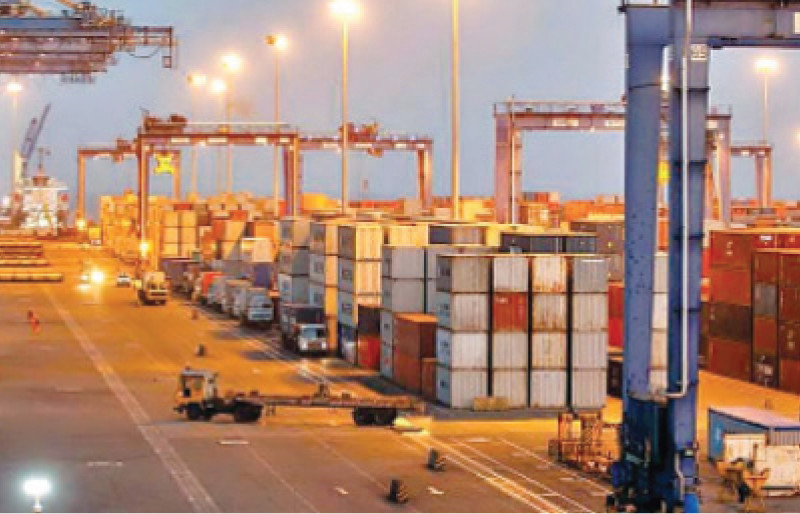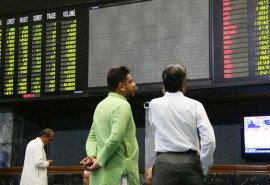
Exports from Pakistan increased from $27.7 billion in FY23 to $30.6 billion in FY24, marking a 10.5% increase in the last fiscal year. Imports into Pakistan decreased by 0.8% as it reported $54.7 billion in FY24. The trade deficit decreased by 12.3% to $24 billion.
With these numbers, the current account deficit in FY24 came in less than $1 billion, a significant change from the past trend of a burgeoning current account deficit. However, the challenge facing the policymakers today is to kickstart the economy and lower inflationary pressure.
The slump in business activities because of measures to curtail the current account deficit has resulted in shortages and an upward spiralling inflation. The exports from Pakistan had increased at more than 25% in FY22 and surpassed $31.5 billion but had decreased to $27.7 billion in FY23.
The current level of exports, which is less than 10% of Pakistan’s GDP, will not be able to sustain a low current account balance once the demand for imports starts to increase.
Policies to curtail the double-edged sword, which involves a large current account deficit and a fiscal deficit, often hurt consumers and producers. While the former face shortages and rising prices of final goods, the latter face increased taxes that often adversely impact their business activities.
The recent tax policies that include a shift for textile exports from a final tax regime of 1% on turnover to a normal tax regime of 29% on profits have raised deep concerns among the biggest exporters as their reliance on government incentives is likely to reduce.
The textile sector contributes approximately 60% of the exports from Pakistan. Textile exports constitute a much smaller percentage in major regional counterparts such as India, China, and Vietnam.
Although Pakistan has recently moved up the value chain as a large proportion of exports include readymade garments and apparel that involve higher value addition due to the downstream nature of the products, cotton yarn accounts for a significant proportion of the exports.
On the other hand, Vietnam and Bangladesh are mainly exporters of value-added downstream products, with intermediate goods likely constituting a much smaller share of their total textile exports.
Even within textiles, it is imperative for Pakistan to increase its exports of products manufactured from synthetic and man-made fibre. In recent years, Bangladesh has increased exports of such products as it diversifies its product range.
This is highlighted in a recent report, titled “Pakistan and EU Trade Potential: The Bottlenecks and Roadmap for Reforms”, published by the Friedrich Naumann Foundation for Freedom Pakistan.
Export subsidies are a contentious issue between policymakers and exporters as the latter rely on them to generate much-needed export revenue, but it drains meagre financial resources. Pakistan has provided incentives for exporters such as export finance schemes for exporting firms and drawback on duties and taxes.
However, with the burgeoning fiscal budget, many of the benefits have been reduced. Pakistan has mostly focused its incentive schemes on traditional exports such as textiles, rice, and leather.
Recently, the IT sector has gained some traction as it has been identified as an important contributor to GDP as well as job growth. Regional counterparts do provide incentives to their exporters, but these incentives have become more innovative in recent years.
The data on export subsidies is extracted from Global Trade Alert. For instance, Bangladesh has introduced incentives to encourage environmentally friendly investments and green transformation funds so that their products can continue to sell in advanced countries that are likely to adopt carbon-based tax mechanisms to deter imports of goods produced using dirtier technologies.
India is targeting more specific products in its newer policies to encourage greater diversification in exports.
China has introduced policies to encourage product development of high-quality health and medical equipment. Such policies are likely to impact the production in textile products, particularly the downstream industries.
A recent study, titled “Do export subsidies dampen export unit values across markets? A case study on Pakistan,” describes how export unit value is likely to be influenced by export market characteristics based on whether the products are provided with export subsidies.
The export subsidies are defined using the Global Trade Alert database. The study finds that products receiving export subsidies are likely to show lower dispersion in export unit value across markets, highlighting the dampening role of export market characteristics on export unit value across export destinations.
However, exporters that do not receive export subsidies on the products report that different export market characteristics can influence the export unit value generated from export sales.
For instance, selling in richer markets may raise export unit value on such products. Hence, it is critical that the policymakers devise strategies to encourage exporters to not only diversify their product range but also upgrade the quality of the products as they compete in different export market destinations, particularly those that can add significant value to export unit value and reduce dependency on export subsidies.
In essence, Pakistan needs to adopt policies that encourage sustainable growth in its exports. As the government faces pressure on its fiscal accounts, the financial incentives and relief to exporters are likely to be reduced.
It is imperative that the government undertakes measures to boost the productivity of firms so that they can become more competitive regionally and globally.
Reducing bureaucratic hurdles must be made a priority. First, digitalisation of all trade procedures is the key, and the implementation of the Pakistan Single Window is a step in the right direction.
Second, the government must ensure that exporters are able to access not only their inputs but also purchase and upgrade their machinery and equipment. Import restrictions must be reduced.
Third, Pakistan must address the gap in the quality of goods produced domestically and those produced in its main export destinations. Often standards and quality control measures by trading partners are imposed that can limit the exports from Pakistan. A better-integrated trade information portal that improves the efficiencies of regulatory authorities will help bridge this gap. It is imperative to rethink the export strategies at a time of deep fiscal challenge.
THE WRITER IS AN ASSISTANT PROFESSOR OF ECONOMICS AND RESEARCH FELLOW AT CBER, INSTITUTE OF BUSINESS ADMINISTRATION, KARACHI


1731479848-0/Elon-Musk-and-Vivek-Ramaswamy-and-Donald-Trump-(1)1731479848-0-165x106.webp)















COMMENTS
Comments are moderated and generally will be posted if they are on-topic and not abusive.
For more information, please see our Comments FAQ